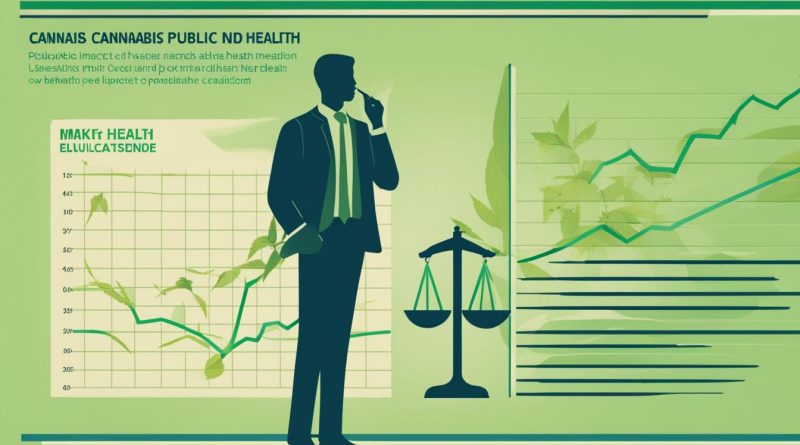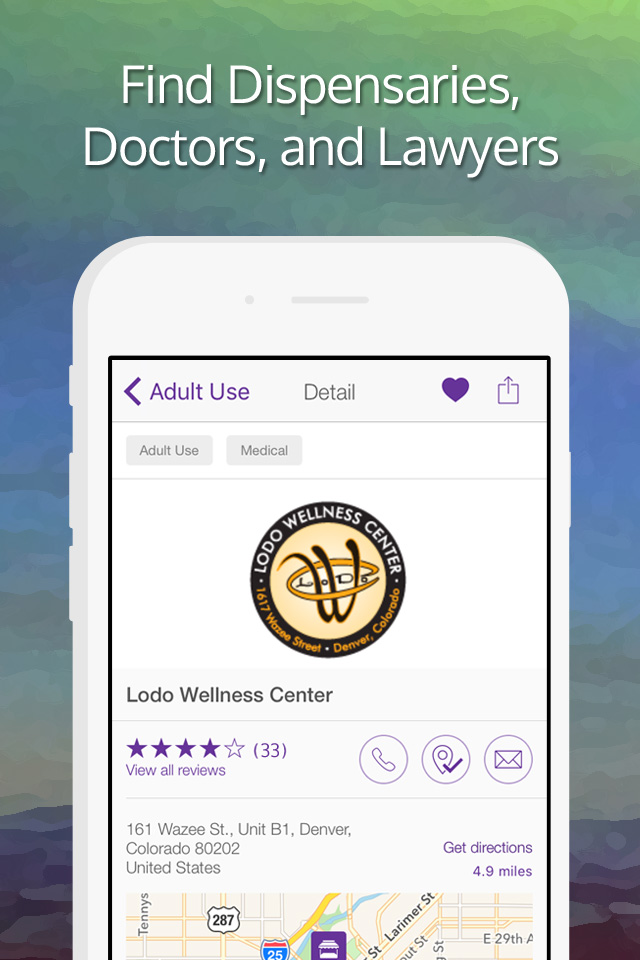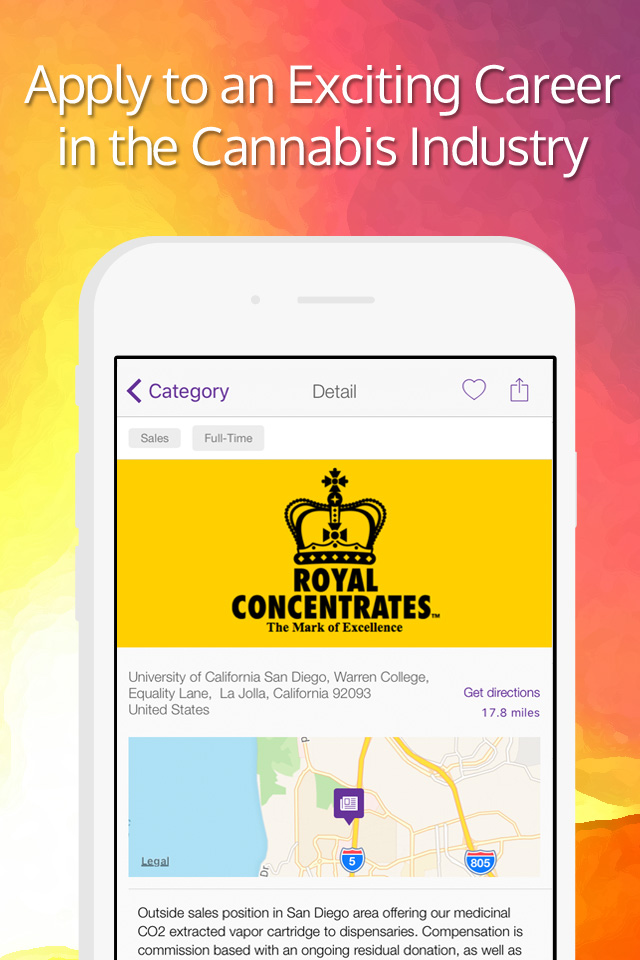Cannabis’s Impact on Public Health
Welcome to our comprehensive exploration of the complex relationship between cannabis and public health. In this article, we delve into the evolving landscape of cannabis laws, the implications for community health, safety concerns, and the development of public health policies. We aim to provide a balanced perspective, shedding light on the potential risks and benefits of cannabis use and the importance of evidence-based approaches.
As the legalization of cannabis continues to expand across the United States, it is crucial to examine its impact on public health. From changes in adolescent cannabis use to the potential consequences for mental health, we will explore the latest research and insights to understand the multifaceted nature of this issue.
Our goal is to equip you with the knowledge to navigate this increasingly relevant topic. Let’s dive in and explore how cannabis intersects with public health, community well-being, safety concerns, and policy implications.
Key Takeaways
- Cannabis legalization has led to varying state laws and policies across the United States.
- Adolescent cannabis use can have significant health implications and may impact brain development.
- Educational and prevention programs need to adapt to address the changing landscape of cannabis use.
- Cannabis use has been associated with mental health issues, including psychosis and anxiety.
- Marijuana use can have physical effects on respiratory health and heart function.
The Current Landscape of Marijuana Laws in the United States
With the growing popularity of cannabis, it is essential to understand the current landscape of marijuana laws in the United States. As of June 2021, 36 states, four territories, and the District of Columbia have enacted medical marijuana laws, allowing the use of marijuana for medicinal purposes. Additionally, 17 states, two territories, and the District of Columbia have also passed recreational marijuana laws, permitting the use of marijuana for recreational purposes as well.
It is important to note that while individual states have legalized cannabis, it remains illegal under federal law. This creates a unique situation where state and federal laws are in conflict. However, the federal government has generally taken a hands-off approach to enforcing federal laws in states that have legalized cannabis, allowing individual states to establish their own regulations and policies.
The varying approaches to cannabis legalization across states have significant implications for public health and the use of cannabis among different populations. Understanding the differences in medical and recreational marijuana laws is crucial in developing appropriate policies and interventions related to cannabis use.
Table: Comparison of Medical and Recreational Marijuana Laws Across States
| State/Territory | Medical Marijuana Laws | Recreational Marijuana Laws |
|---|---|---|
| California | Legal | Legal |
| Colorado | Legal | Legal |
| Florida | Legal | No |
| Oregon | Legal | Legal |
| Texas | Illegal | No |
This table provides a snapshot of the current status of marijuana laws in a few selected states. It is crucial to consult the specific laws and regulations of each state for a comprehensive understanding of their cannabis policies.
Adolescent Cannabis Use and Health Implications
Adolescent cannabis use has become a growing concern in the context of marijuana legalization. The accessibility of marijuana, particularly in states where recreational use is legal, has raised questions about its impact on young people’s health. Research suggests that cannabis use during adolescence can disrupt brain development, leading to long-term cognitive impairments and increased susceptibility to mental health issues.
Studies have shown that marijuana use in adolescence can interfere with the normal maturation of the brain, particularly in regions responsible for memory, learning, and decision-making. This can result in reduced cognitive abilities, impaired academic performance, and an increased risk of mental health disorders later in life. The developing brain is highly vulnerable to the effects of THC, the psychoactive component of cannabis, which can alter neural connections and impact brain function.
Furthermore, adolescent cannabis use has been associated with several health risks. Frequent and heavy marijuana use during adolescence has been linked to an increased likelihood of respiratory problems, such as chronic bronchitis and lung infections. Additionally, regular cannabis use during this critical developmental stage may heighten the risk of addiction and substance abuse disorders in the future.

Table: Health Risks Associated with Adolescent Cannabis Use
| Health Risk | Description |
|---|---|
| Disruption of Brain Development | Cannabis use during adolescence can interfere with the normal maturation of the brain, leading to long-term cognitive impairments and an increased risk of mental health disorders. |
| Respiratory Problems | Frequent and heavy marijuana use during adolescence has been associated with an increased likelihood of respiratory issues, such as chronic bronchitis and lung infections. |
| Increased Risk of Addiction | Regular cannabis use during adolescence may heighten the risk of developing addiction and substance abuse disorders later in life. |
It is crucial to address adolescent cannabis use through evidence-based prevention programs, targeted education, and public health policies that prioritize the well-being of young individuals. By promoting awareness of the potential health risks associated with marijuana use and implementing effective strategies to discourage early initiation, we can protect the health and future prospects of our youth.
Implications for Education and Prevention Programs
As the landscape of marijuana use and legalization continues to evolve, it is crucial to adapt education and prevention programs to effectively address the changing needs and challenges. Traditional approaches that focus solely on the risks and dangers of marijuana use are no longer effective in the current context. We need evidence-based interventions and prevention strategies that provide accurate information and promote responsible decision-making.
Marijuana education programs should aim to empower individuals by providing comprehensive knowledge about the potential health risks and benefits associated with cannabis use. By fostering a balanced understanding, we can equip individuals with the tools they need to make informed choices. These programs should cover topics such as the effects of marijuana on brain development, mental health implications, and safe usage practices.
One effective strategy is to incorporate harm reduction principles into marijuana education and prevention programs. Instead of solely focusing on abstinence, harm reduction recognizes that some individuals may choose to use marijuana despite potential risks. By providing practical strategies such as proper dosage guidance, using harm reduction approaches can help minimize potential harm and promote responsible use.
In addition to education programs, prevention strategies should also target vulnerable populations, such as adolescents and pregnant individuals. Research suggests that early intervention and prevention efforts can significantly reduce the likelihood of problematic marijuana use later in life. By implementing evidence-based prevention programs that address risk factors and promote protective factors, we can effectively reduce the prevalence of marijuana use among these populations.

Evidence-based Interventions and Prevention Strategies
| Intervention/Strategy | Description |
|---|---|
| School-based prevention programs | Implement evidence-based prevention curricula in schools to provide accurate information about marijuana and develop skills to resist peer pressure. |
| Community outreach and engagement | Engage with local communities to provide education, resources, and support for individuals at risk of problematic marijuana use. |
| Mental health integration | Integrate mental health support services into prevention programs to address underlying mental health issues that may contribute to marijuana use. |
| Regulation and policy development | Develop and enforce regulations that promote responsible marijuana use, restrict access for vulnerable populations, and implement taxation for public health initiatives. |
“Effective prevention programs should adopt a comprehensive approach that combines accurate information, skill-building, and supportive environments to reduce the demand for marijuana among at-risk individuals.” – Dr. Sarah Thompson, Public Health Expert
By implementing evidence-based interventions and prevention strategies, we can address the potential health risks associated with marijuana use while also respecting individual autonomy. It is crucial to continually evaluate and update these programs based on the latest research and emerging trends to ensure their effectiveness. Together, we can create a healthier and more informed society in the face of changing marijuana policies and practices.
The Relationship Between Cannabis and Mental Health
Growing research suggests that there is a complex relationship between cannabis use and mental health. The psychoactive component of marijuana, THC, can have both short-term and long-term effects on brain function. While some individuals may experience relaxation and euphoria, others may be at an increased risk of mental health issues.
A study published in the British Journal of Psychiatry found that cannabis use was associated with an increased risk of psychosis, particularly in individuals who had a genetic predisposition to the condition. Another study published in JAMA Psychiatry suggested that cannabis use could exacerbate anxiety and depression symptoms.
It’s important to note that the impact of cannabis on mental health can vary depending on factors such as the frequency and duration of use, the potency of the strain, and individual susceptibility. Ongoing research is needed to better understand the mechanisms underlying the relationship between cannabis and mental health and to identify potential risk factors or protective factors.
In a society where cannabis use is becoming increasingly normalized, it is crucial that we educate individuals about the potential mental health implications. By providing accurate information and promoting mental health literacy, we can empower individuals to make informed decisions regarding cannabis use and support those who may be experiencing mental health challenges.
While cannabis has the potential to offer medicinal benefits, it is important to be mindful of the potential risks to mental health. As public health professionals, it is our responsibility to advocate for evidence-based policies, prevention strategies, and access to mental health resources. By addressing the relationship between cannabis and mental health, we can prioritize the well-being of individuals and communities.

The Impact of THC on Brain Function
THC interacts with the brain’s endocannabinoid system, which plays a role in regulating various physiological processes, including mood, cognition, and pain perception. The activation of cannabinoid receptors by THC can disrupt these processes and potentially lead to cognitive impairments.
Long-term and heavy cannabis use, especially when initiated during adolescence, has been associated with a decline in IQ and persistent cognitive impairments. Research has also shown that cannabis use can impair attention, memory, and executive functioning.
It is important to highlight that the impact of THC on brain function can vary depending on individual factors such as age, genetics, and overall brain health. Additionally, the use of cannabis products with higher THC concentrations may pose a greater risk for cognitive impairments.
Addressing Mental Health Implications
Given the potential mental health implications of cannabis use, it is essential to integrate mental health screenings and support into cannabis education and prevention programs. This can help identify individuals who may be at risk for mental health challenges and ensure they receive the necessary support and resources.
Furthermore, healthcare professionals and public health organizations can collaborate to develop targeted interventions and treatment programs for individuals who may experience mental health issues related to cannabis use. By addressing the mental health implications of cannabis use, we can work towards promoting overall well-being and minimizing potential harms.
Health Consequences of Marijuana Use
When it comes to the physical effects of marijuana use, there are several health consequences to consider. One area of concern is respiratory problems. Smoking marijuana, whether in the form of joints or using a pipe, can lead to similar respiratory issues as tobacco smoke. Regular marijuana smokers may experience symptoms such as coughing, wheezing, and an increased risk of lung infections.
Another aspect to consider is the impact of marijuana use on heart health. Research suggests that marijuana use can increase heart rate and blood pressure, which may pose a higher risk of heart attack, particularly for individuals with existing heart conditions. It’s important for individuals to be aware of these potential risks, especially if they have a history of cardiovascular problems.
Additionally, the use of marijuana during pregnancy has been associated with negative health outcomes. Studies have shown that marijuana use during pregnancy can lead to lower birth weight and an increased risk of behavioral problems in children. It is crucial for expectant mothers to understand the potential risks and make informed decisions about their marijuana use.
| Physical Effects of Marijuana | Health Consequences |
|---|---|
| Respiratory Problems |
|
| Heart Health |
|
| Pregnancy |
|
While marijuana may have potential medical benefits, it is crucial to recognize and understand the potential physical health consequences associated with its use. From respiratory problems to heart health and pregnancy-related complications, individuals need to be aware of these risks and make informed decisions about their marijuana use.

By providing accurate information about these health consequences, we can empower individuals to make informed choices about marijuana use and promote overall well-being. It is essential to prioritize public health education that encompasses the potential physical effects of marijuana, ensuring that individuals have the knowledge they need to make informed decisions about their health.
Cannabis and Brain Development
The use of cannabis during adolescence can have significant effects on brain development, leading to cognitive impairment and long-term consequences. Research has shown that the teenage brain is particularly vulnerable to the effects of marijuana, as it is still undergoing crucial developmental processes.
Studies have indicated that regular marijuana use during adolescence can result in a decline in IQ and persistent cognitive impairments. These impairments can impact various cognitive functions, including thinking, memory, and learning. It is essential to understand that these effects can be long-lasting and may have significant implications for individuals’ academic and professional achievements.
Furthermore, the use of cannabis during this critical developmental stage has also been associated with an increased risk of mental health problems, such as anxiety disorders and psychosis. The psychoactive compound in marijuana, THC, can disrupt the normal functioning of the brain and contribute to the onset of these conditions.
The Importance of Early Intervention
To mitigate the potential negative effects of cannabis on brain development, it is crucial to prioritize early intervention and prevention strategies. Educational programs should focus on providing accurate information about the risks associated with marijuana use, particularly for young people.
By raising awareness about the specific impact of cannabis on brain development, we can empower adolescents to make informed decisions regarding their health and well-being. Additionally, targeted interventions and support services can help individuals who have already engaged in marijuana use to address any potential cognitive impairments and develop healthier habits.
| Effects of Cannabis on Brain Development | Implications |
|---|---|
| Decline in IQ and cognitive impairments | Affects academic and professional achievements |
| Increased risk of mental health problems | Contributes to anxiety disorders and psychosis |
| Disruption of normal brain functioning | Alters cognitive processes and learning abilities |
Through a comprehensive approach that combines education, early intervention, and support, we can work towards minimizing the potential negative impact of cannabis on brain development and ultimately promote the health and well-being of young individuals.
The Rise of THC Levels in Marijuana
Over the past few decades, there has been a significant increase in the potency of marijuana, primarily due to higher levels of THC (tetrahydrocannabinol). THC is the main psychoactive component of cannabis, responsible for producing the “high” or euphoric effects. This rise in THC levels has important implications for the health risks associated with marijuana use.
Higher potency strains of marijuana contain elevated levels of THC, sometimes reaching 20% or even higher. This increased concentration can lead to more intense and unpredictable effects, especially for novice users or those with lower tolerance. The consumption of high THC doses has been linked to a higher risk of adverse reactions, including anxiety, paranoia, and even hallucinations.
Furthermore, the popularity of edibles has contributed to potential dangers associated with THC levels. Edibles, such as cannabis-infused foods or beverages, can take longer to produce an effect compared to smoking or vaping. As a result, individuals may consume more than intended while waiting for the desired effects to kick in, leading to overdosing and unpleasant experiences.
| Type of Marijuana | THC Content |
|---|---|
| Low-potency strains | Less than 10% |
| Medium-potency strains | 10-15% |
| High-potency strains | Above 20% |
The increasing levels of THC in marijuana highlight the importance of informed decision-making and responsible use. It is crucial for individuals to understand the potential health risks associated with higher potency strains and to consume marijuana in moderation. Additionally, regulatory measures and labeling requirements can play a significant role in providing consumers with accurate information about THC levels and promoting safer consumption practices.
Cannabis and Public Health Policies
The legalization of cannabis has sparked a need for comprehensive public health policies that address the regulation, education, and harm reduction strategies related to its use. While cannabis legalization has led to increased state tax revenue and decreased arrests for possession, it has also presented potential health risks and challenges for policymakers. We must carefully consider the implications of cannabis use on public health and develop evidence-based strategies to mitigate potential harms.
Regulation plays a crucial role in ensuring that cannabis products meet safety standards and are dispensed responsibly. By implementing measures such as product testing, labeling requirements, and age restrictions, policymakers can help protect consumers from potential hazards. Additionally, regulations governing advertising and marketing can minimize the impact of cannabis promotion on vulnerable populations, particularly adolescents.
Harm reduction strategies are also vital in addressing the public health implications of cannabis use. These strategies focus on minimizing the negative consequences associated with cannabis use without necessarily promoting or condoning its use. They include initiatives such as providing access to substance abuse treatment, implementing responsible use guidelines, and offering harm reduction education programs. By adopting a harm reduction approach, we can strive to reduce the potential risks and health disparities associated with cannabis use.
Education is a key component in ensuring that individuals make informed decisions about cannabis use and understand the potential health risks. Public health education programs should provide accurate information about the effects of cannabis on physical and mental health, as well as strategies for responsible use. These programs can be tailored to different populations, taking into account factors such as age, cultural diversity, and socioeconomic status.
| Public Health Policies for Cannabis Regulation | Status |
|---|---|
| Product Testing and Labeling | Implemented in most legalized states |
| Age Restrictions | Enforced, but age limits vary by state |
| Advertising and Marketing | Regulated to minimize impact on vulnerable populations |
| Harm Reduction Strategies | Increasingly emphasized in public health approaches |
| Substance Abuse Treatment | Available to address cannabis use disorders |
| Responsible Use Guidelines | Promoted to minimize risks and promote safe use |
“Effective public health policies surrounding cannabis should strike a balance between regulation, harm reduction, and education. By adopting evidence-based approaches, we can promote the well-being of individuals and communities while addressing the challenges posed by cannabis legalization.” – Dr. Jane Johnson, Public Health Expert
The Role of Education and Research
In order to fully understand the effects of cannabis on public health and inform evidence-based policies and interventions, ongoing research is crucial. The rapidly changing landscape of cannabis legalization and use necessitates a deep dive into the potential risks and benefits associated with its consumption. Through rigorous scientific studies and comprehensive data analysis, we can gain valuable insights that will shape public health practices and regulations surrounding cannabis.
Research plays a pivotal role in unraveling the complex relationship between cannabis use and public health outcomes. By examining the short-term and long-term effects of cannabis on various aspects of physical and mental well-being, we can develop a better understanding of the risks, as well as the potential therapeutic applications of cannabis-derived compounds. The findings from these studies can inform evidence-based policies that prioritize public health and safety.
Public health education also plays a critical role in promoting accurate information about cannabis use. By providing the public with accessible and evidence-based resources, we can help individuals make informed decisions about cannabis consumption and minimize potential harm. It is essential to equip healthcare professionals, educators, and policymakers with the knowledge and tools needed to effectively communicate the risks and benefits of cannabis use to the public.
Together, education and research form the foundation for evidence-based policy-making in the cannabis arena. By fostering collaboration between researchers, educators, and policymakers, we can create a comprehensive and well-informed approach to cannabis regulation and public health. Ongoing research and education efforts are vital in ensuring that public health policies surrounding cannabis are based on the latest evidence and strive to protect the well-being of individuals and communities.
Key Takeaways:
- Ongoing research is necessary to fully understand the effects of cannabis on public health and inform evidence-based policies and interventions.
- Research plays a crucial role in unraveling the complex relationship between cannabis use and various aspects of physical and mental well-being.
- Public health education is essential in promoting accurate information about cannabis use and empowering individuals to make informed decisions.
- Education and research form the foundation for evidence-based policy-making in the cannabis arena.
| Research | Education | Evidence-based Policy |
|---|---|---|
| Conduct comprehensive studies on the effects of cannabis on physical and mental health. | Provide accurate information about the risks and benefits of cannabis use to the public. | Develop policies based on scientific evidence to ensure public health and safety. |
| Examine the short-term and long-term effects of cannabis on various aspects of well-being. | Equip healthcare professionals, educators, and policymakers with knowledge and tools for effective communication. | Collaborate with researchers, educators, and policymakers to create a comprehensive approach to cannabis regulation. |
| Inform evidence-based interventions and prevention strategies. | Empower individuals to make informed decisions about cannabis consumption. | Continuously evaluate and update policies based on the latest research findings. |
Conclusion
After exploring the complex relationship between cannabis and public health, it is clear that there is no simple answer. While there are potential benefits of cannabis for certain medical conditions, such as pain management and epilepsy, its use raises legitimate health concerns, especially among adolescents. The relaxation of state marijuana laws and the increasing availability of cannabis products have led to a need for comprehensive public health policies and evidence-based education programs.
We must adapt our approaches to address the changing landscape of marijuana legalization and use. Traditional drug education programs that use scare tactics are no longer effective. Instead, we need to focus on evidence-based interventions and prevention strategies that provide accurate information about the risks and benefits of cannabis use. By promoting harm reduction and responsible use, we can better protect the health and well-being of individuals and communities.
Continued research is crucial in understanding the effects of cannabis on public health. We need to further investigate the impact of chronic marijuana use on brain development, mental health outcomes, and overall physical health. This research will inform evidence-based policies and interventions that can effectively address the potential harms of cannabis use while preserving individual liberties and personal choices.
In conclusion, as we navigate the complex terrain of cannabis and public health, it is essential to strike a balance. By promoting responsible use, implementing evidence-based strategies, and fostering ongoing research, we can maximize the potential benefits of cannabis while minimizing the associated risks. Working together, we can ensure that the legalization and use of cannabis align with the goal of promoting the health and well-being of all individuals and communities.
FAQ
What are the potential risks of adolescent cannabis use?
Adolescent cannabis use can interfere with brain development and has been associated with various health risks. It may impair thinking, memory, and learning functions and can result in a decline in IQ and persistent cognitive impairments.
How does cannabis use affect mental health?
Cannabis use has been linked to various mental health issues, including an increased risk of psychosis and the exacerbation of anxiety and depression. THC, the main psychoactive component of marijuana, can have both short-term and long-term effects on brain function.
What are the health consequences of marijuana use?
Smoking marijuana can lead to respiratory problems similar to those caused by tobacco smoke, including daily cough and lung infections. It can also increase heart rate and may pose a higher risk of heart attack, especially for those with existing heart conditions. Additionally, marijuana use during pregnancy has been associated with lower birth weight and increased risk of behavioral problems in children.
Is marijuana addiction a concern?
Regular exposure to high THC doses may increase the risk of addiction. Higher THC levels in marijuana can also increase the risk of adverse reactions, such as anxiety and paranoia.
How has marijuana legalization impacted public health policies?
The legalization of cannabis has had both intended and unintended consequences for public health. While it has led to increased state tax revenue and decreased arrests for possession, it has also resulted in potential health risks and challenges for policymakers. Public health policies are being developed to address the regulation, education, and harm reduction strategies related to cannabis use.
What is the role of education and research in understanding cannabis and public health?
Continued research is necessary to fully understand the effects of cannabis on public health and to inform evidence-based policies and interventions. Public health education plays a crucial role in providing accurate information about the risks and benefits of cannabis use.













